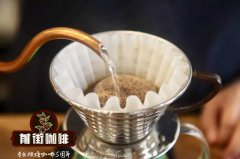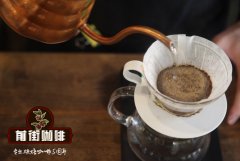Indonesia Luwak civet coffee how to drink? What brands of Indonesian coffee do you recommend?

Professional coffee knowledge exchange more coffee bean information please follow the coffee workshop (Wechat official account cafe_style)
The total output of coffee in Indonesia is also among the largest in the world, and both Arabica and Robusta have a balanced scale, ranging from cheap to noble quality.
In addition, Indonesia is made up of 17508 archipelago and is the largest archipelago country in the world, so it will be difficult to remember the actual territory of Indonesia.
The common coffee in Indonesia can be divided into three common types: Sumatra Mantenin, Sulawesi Tonaga, Java and Muscat Coffee.
Sumatra, Sumatra Mantenin, Mantenin and so on are all regulated on the island of Sumatra. Sumatra is the sixth largest island in the world.
Geographically, the main producing areas of boutique coffee in Mantenin, Sumatra are Aceh in the north and North Sumatra in the south of Aceh.
The planting history of Aceh Province is more than 30 years earlier than that of North Soviet Province. The annual output of Aceh Province is about 30,000 tons, while that of North Jiangsu Province is nearly 50,000 tons at present.
The history of coffee cultivation in Sumatra can be traced back to the 18th century, when Indonesia was colonized by the Netherlands and planted in Arabica.
Until World War II, the Japanese front continued to move south, during which time he came to Sumatra, where a Japanese soldier drank the coffee, and his mellow and complex taste made him ask in Japanese, "what kind of coffee is this?"
But he spoke Japanese, and the local Mandaining people drew more hands under their feet and thought they were asking where they were from, so they replied, "Mandheling, Mandheling!"
The Japanese thought the coffee was grown in Manning.
After World War II, the Japanese recalled the coffee he had drunk in Sumatra, so he asked Indonesian businessmen to transport about 15 tons of coffee to Japan. Unexpectedly, the flavor he introduced was very popular in Japan. From then on, he established his status as the king of beans until the advent of the Blue Mountains in Jamaica.
Java and Sulawesi Tonaga were also introduced and planted in the same period. At present, Java coffee is mainly Robusta, so it is no longer elaborated.
The flavor of Sulawesi Tonaga is similar to that of Mantenin, but the original Japanese drank Sumatra, not Sulawesi, so they missed out on fame. Because of the different fate, Sumatra has ample investment in agriculture, and even Japan's UCC owns a direct farm here, making today's Mantenin better.
The origin of civet coffee is mainly in Java. By a coconut civet, commonly known as the "cat family, coconut cat" animals, after eating coffee cherries, through the stomach bag digestion and excretion of the remaining coffee fruit.
Its principle is similar to drinking mulberry leaf tea with silkworm baby shit, the purpose is to use the fermentation effect of stomach acid to ferment it into a special taste with a biological digestion system.
Civets are omnivores, not pure herbivores, so there is a doubt that large amounts of waste will accumulate when the safety of the production process cannot be guaranteed.
In this way, after civet coffee became famous, all over the world began to use a variety of animals to deal with coffee in the same way. For example, Thailand also allows elephants to eat coffee beans and also discharge the fruit of coffee to get "elephant coffee", which is also expensive.
Legend has it that the rarest and most upscale coffee beans, called "Kopi Luwak", are not harvested artificially, but by the Indonesian wild Luwak civet (Civet), which uses its appetite to screen out the best quality beans for coffee gluttons.
The Indonesian word "Kopi" means "coffee", while "Luwak" refers to an arboreal wild animal commonly known as "musk cat" in Indonesia, whose zoological name is Paradoxurus hermaphroditus, but it is actually different from the so-called civets in Taiwan. They are both family Viverridae, but Subfamily is different, one is Paradoxurinae, the other is Viverridae, and Luwak belongs to Palm Civet translated as palm cat. Viverridae belongs to Civet and translates into civet, that is, civet, but both are commonly known as civets.
Kopi Luwak is produced in Jawa, Sumatera and Sulawesi in Indonesia.
Because the range of Luwak civets is at low and middle elevations, most of the coffee varieties are robusta beans, while Arabica beans at high altitudes are rarer. Luwak civets are nocturnal animals. When Luwak civets look for food at night, through their keen sense of smell, they only choose the most ripe, sweet, juicy coffee fruits in coffee trees to eat. The fruit breaks down the outer flesh through the enzymes of its digestive system, but the hard core is still excreted intact without digestion. During digestion, the stomach acid of Luwak Musk Cat breaks down the bitter substance "protein" of coffee beans, and special intestinal bacteria ferment to produce unparalleled changes, its flavor becomes unique, the taste is particularly mellow, and the rich, round and sweet taste is also incomparable to other coffee beans. So the Indonesian fermented coffee beans from Luwak civets are collected, dried, washed, shelled, selected and roasted to produce the rarest, most unique and most precious coffee in the world. This is the Kopi Luwak coffee that Indonesia paid tribute to the Dutch royal family at US $600 a pound. It is said that not only does the British royal family like its mellow flavor, but in five-star restaurants everywhere, a cup of Kopi Luwak costs $30.
Today, the world's only producer of Kopi Luwak coffee is Indonesia, but fewer Luwak civets forage on coffee farms, and coffee beans "made" are even more scarce.
In addition to coffee fruits, Luwak civets also like to eat cocoa, bananas, papayas and other fruits. And it's not easy just to find their feces. Usually, the poop of Luwak civets is buried in the soil and fallen leaves, and it is not easy to see. Even veteran Kopi Luwak collectors may mistake squirrel or bat feces for Luwak civets.
In Indonesia, Luwak civets are becoming more and more difficult to survive because of the increase in human population, making their habitat smaller and smaller. In order to make a living, Indonesian farmers have reclaimed hillsides and planted pepper, cocoa, coffee and rubber trees.
On the other hand, Luwak civets come and go freely in the orchard, eating not only coffee fruits, but also other fruits, some of the more aggressive Luwak civets, and even attack farm chickens. If it grows to more than 100 pounds, its sharp claws and size look terrible, not to mention their delicious meat, and locals are happy to hunt them.
Qianjie Coffee recommends that when brewing Indonesian Luwak civet coffee, the water temperature is 86-88 ℃, the grinding degree is slightly thicker, the size of coarse sugar, and the ratio of powder to water is 1:13-1:14 to retain its mellow taste.
Important Notice :
前街咖啡 FrontStreet Coffee has moved to new addredd:
FrontStreet Coffee Address: 315,Donghua East Road,GuangZhou
Tel:020 38364473
- Prev

How about Indonesian coffee? Are there any good coffee brands in Indonesia? Characteristics of Indonesian coffee
For more information about coffee beans, please follow the Coffee Workshop (official Wechat account cafe_style) Indonesia is made up of more than 17, 000 islands scattered over the equatorial volcanic belt and has fertile soil. Famous producing areas include Sumatra in the west, Sulawesi in the middle, and Java in the south. Coffee was made by the Governor of the Netherlands from Ma in India in 1696.
- Next

What is the famous coffee in Indonesia? How's the Indonesian coffee? Classification of Indonesian coffee
Professional coffee knowledge exchange more coffee bean information please follow the coffee workshop (Wechat official account cafe_style) Indonesia is a large archipelago country composed of many volcanic islands, with excellent coffee growing environment and latitude, each island has different characteristics due to different topography and climate. Coffee islands in Indonesia include Sumatra in Sumatra and Sulaw in Sulawesi.
Related
- Detailed explanation of Jadeite planting Land in Panamanian Jadeite Manor introduction to the grading system of Jadeite competitive bidding, Red bid, Green bid and Rose Summer
- Story of Coffee planting in Brenka region of Costa Rica Stonehenge Manor anaerobic heavy honey treatment of flavor mouth
- What's on the barrel of Blue Mountain Coffee beans?
- Can American coffee also pull flowers? How to use hot American style to pull out a good-looking pattern?
- Can you make a cold extract with coffee beans? What is the right proportion for cold-extracted coffee formula?
- Indonesian PWN Gold Mandrine Coffee Origin Features Flavor How to Chong? Mandolin coffee is American.
- A brief introduction to the flavor characteristics of Brazilian yellow bourbon coffee beans
- What is the effect of different water quality on the flavor of cold-extracted coffee? What kind of water is best for brewing coffee?
- Why do you think of Rose Summer whenever you mention Panamanian coffee?
- Introduction to the characteristics of authentic blue mountain coffee bean producing areas? What is the CIB Coffee Authority in Jamaica?

